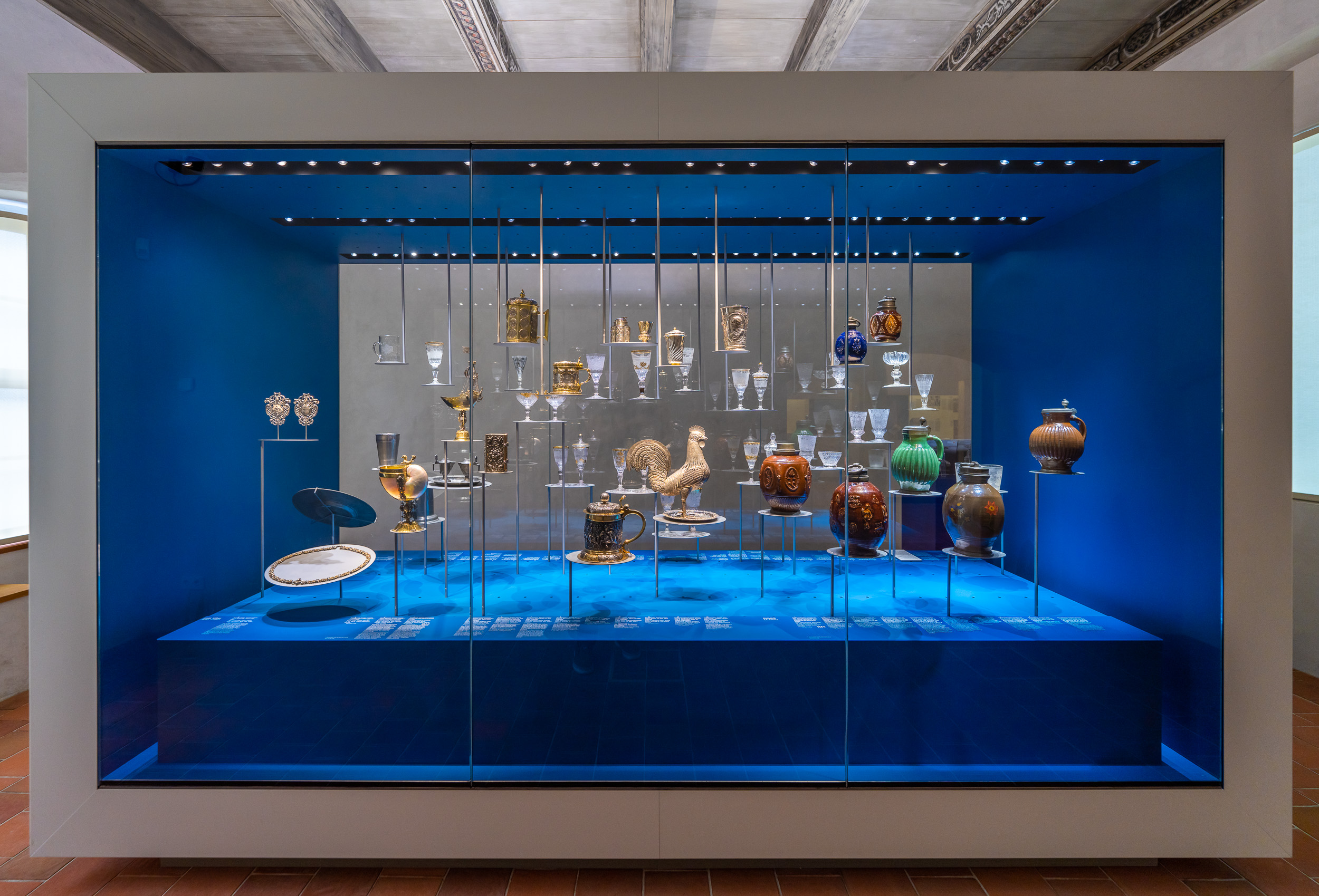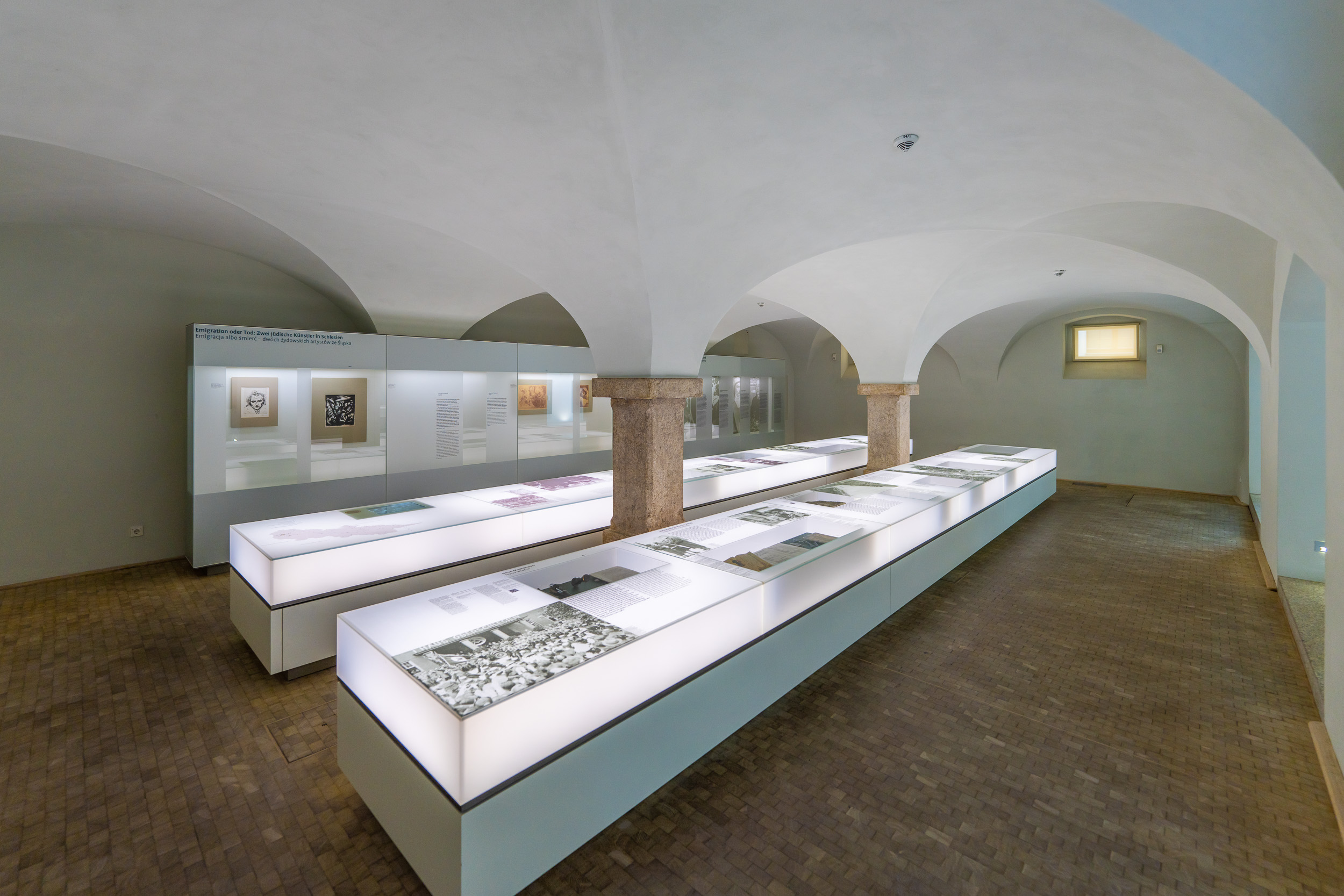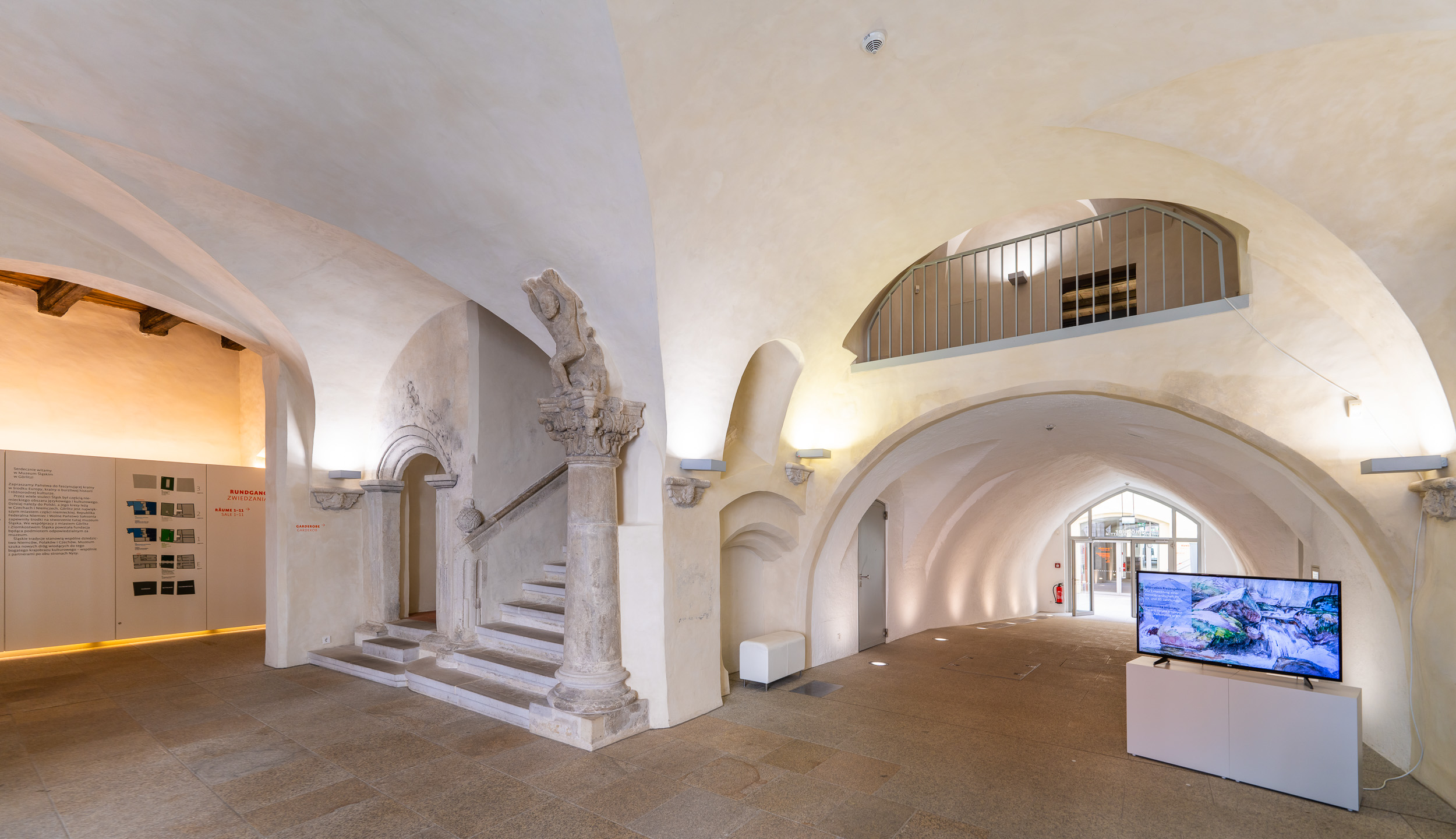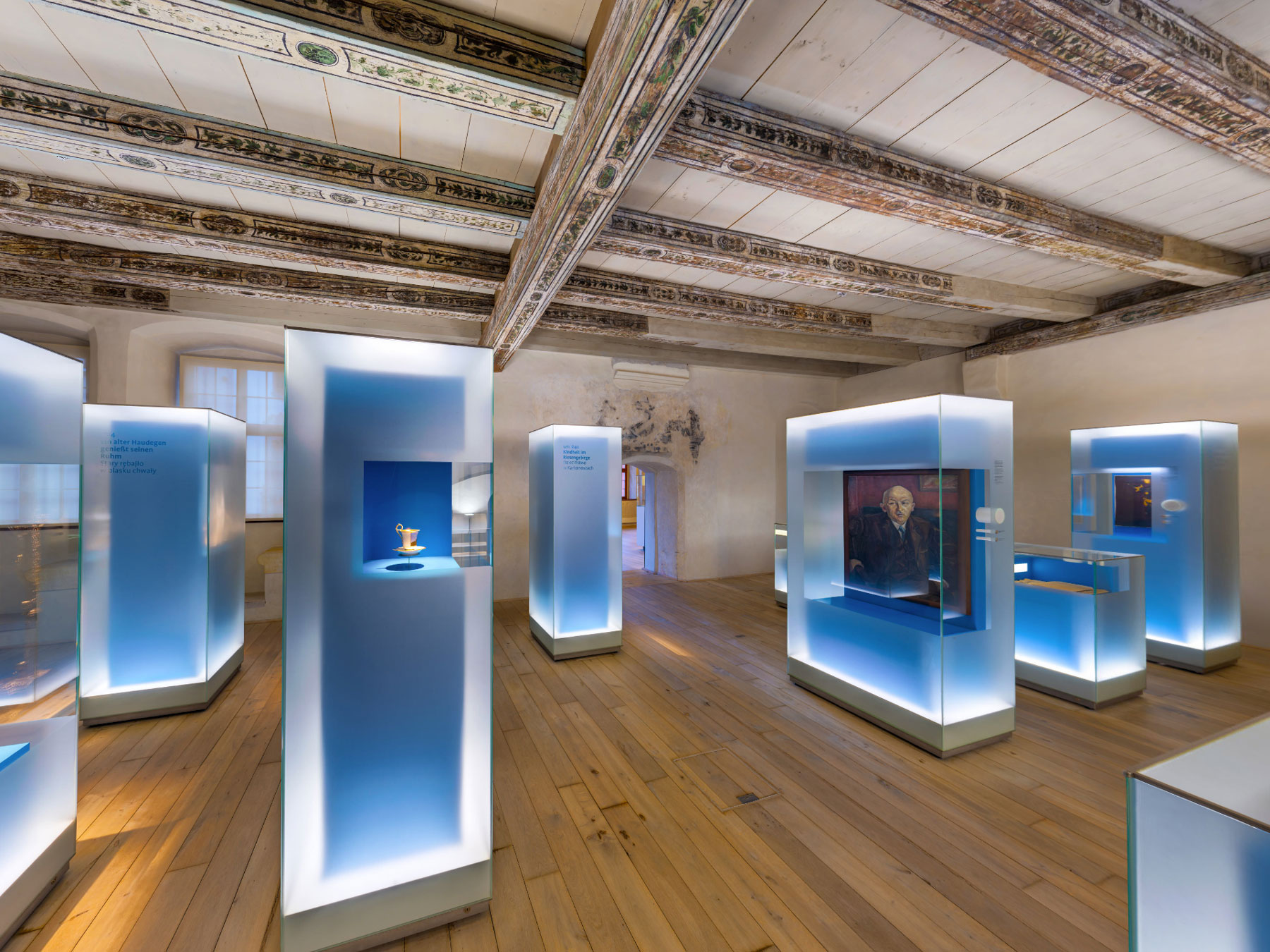
Early arts and crafts
Photographs
3D Models
Showpieces from aristocratic houses, churches and monasteries
Silesian arts and crafts had already reached a high level by the end of the Middle Ages. Products made by local craftsmen adorned the homes of Silesian citizens and nobles, council and guild parlours, churches and monasteries. Room 5, for example, contains very precious objects such as a nautilus goblet or a golden drinking vessel, as well as gold-decorated goblets and skilfully cut glassware.
Europe-wide trade contacts provided inspiration and role models. Top-quality works from Silesian production were traded beyond the country’s borders. From the late 17th century onwards, glass from the glassworks in the Giant Mountains in particular was held in high esteem in many parts of Europe.
The masters in Wrocław were always leaders in the processing of precious metals. At the same time, they were role models for the masters in other cities such as Schweidnitz, Jauer and Glogau. An independent goldsmith tradition developed in Neisse from the end of the Middle Ages and flourished during the Baroque period.
Impulses for technical or stylistic innovation often came from Augsburg and Nuremberg and were realised at a high level of craftsmanship. The longevity of the styles is typical of Silesian goldsmiths’ work.
Wood and quartz, the prerequisites for glass production, were plentiful in the mountain ranges of Silesia. From the late Middle Ages until the 17th century, the glassworks between Glatz and Hirschberg mainly produced simple, greenish “forest glass”. Immigrant glassmakers brought decorative moulds from the Ore Mountains to the Hirschberg valley. From the middle of the 17th century, Silesia became famous for the production of “white” colourless glass, refined by sophisticated cutting and polishing. Painted glass also sold well throughout Europe during the Rococo period.
See similar attractions!
On a 2000 m2 exhibition space, visitors can explore approximately 1000 exhibits from the history of Silesian culture.
)
)
)
)